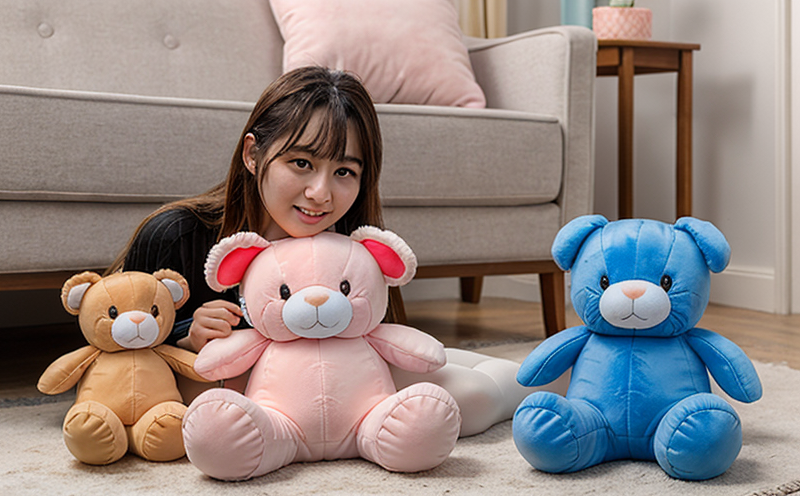EN 71-1 Filling Material Cleanliness and Hygiene Test
The EN 71-1 standard is a cornerstone in the toy industry, providing comprehensive safety requirements for toys intended for use by children. The specific test we are focusing on here, EN 71-1:2019 Filling Material Cleanliness and Hygiene Test, ensures that the stuffing materials used within plush or stuffed toys meet strict cleanliness and hygiene standards to prevent the transmission of harmful substances.
The filling material is a crucial component in plush toys as it not only provides comfort but also contributes significantly to the toy's safety. The test aims to identify any potentially hazardous substances, including heavy metals, formaldehyde, and other chemicals that could be harmful if ingested or come into prolonged contact with skin. By adhering to these stringent requirements, manufacturers can ensure their products meet regulatory standards and safeguard children’s health.
This testing process is essential for several reasons. Firstly, it protects the reputation of toy manufacturers by ensuring their products are safe and compliant with international regulations. Secondly, it enhances consumer trust in the brand and product quality. Lastly, compliance with such rigorous tests can open up new markets and opportunities for exporters who need to meet specific regulatory requirements.
The test procedure involves several steps. Initially, a representative sample of the filling material is taken from the toy. This sample must be prepared according to the specified methods outlined in EN 71-1:2019, which might include sieving and homogenization to ensure consistency across all samples being tested. Once prepared, the sample undergoes analysis using various analytical techniques such as X-ray fluorescence (XRF) for detecting heavy metals, gas chromatography-mass spectrometry (GC-MS) for identifying volatile organic compounds, and high-performance liquid chromatography (HPLC) for assessing pesticide residues.
After thorough testing, the results are compared against the permissible limits set by EN 71-1:2019. Compliance with these limits indicates that the filling material is safe to use in toys intended for children. Non-compliance could lead to product recalls and severe penalties under relevant consumer protection laws.
For toy manufacturers, this test represents a significant investment in ensuring product safety and quality. It also demonstrates their commitment to regulatory compliance and consumer protection. By meeting these stringent standards, companies can ensure that their products are not only safe but also meet the expectations of modern consumers who demand high levels of hygiene and cleanliness.
- Sample Preparation: Careful handling and processing of representative samples to ensure accurate testing results.
- Analytical Techniques: Use of advanced analytical methods like XRF, GC-MS, and HPLC for precise measurement.
- Comparison Against Limits: Ensuring that all detected substances are within the permissible limits set by EN 71-1:2019.
The importance of this test cannot be overstated. It is a vital step in safeguarding children's health and ensuring that toys meet the highest standards of safety and hygiene. By adhering to these rigorous testing protocols, manufacturers can build trust with consumers and comply with international regulations, thus opening doors to new markets.
Eurolab Advantages
At Eurolab, we are committed to providing the highest level of expertise in toy testing services. Our team of experienced professionals ensures that every test conducted adheres strictly to international standards such as EN 71-1:2019. Here’s why you should choose us for your filling material cleanliness and hygiene tests:
- Comprehensive Testing Capabilities: We offer a full range of testing services tailored specifically for the toy industry, ensuring that all aspects are covered.
- Precision and Accuracy: Our state-of-the-art laboratories equipped with cutting-edge technology guarantee accurate results every time.
- Compliance Assurance: We ensure strict adherence to international standards, providing peace of mind for our clients.
- Expertise in Regulatory Compliance: Our team has extensive experience in navigating the complexities of global toy safety regulations.
We understand that meeting these stringent requirements is crucial for maintaining a positive reputation and ensuring consumer trust. By selecting Eurolab, you are partnering with an organization dedicated to excellence in testing and quality assurance.
International Acceptance and Recognition
- The European Union: The EN 71-1:2019 standard is widely recognized within the EU as a benchmark for toy safety. Compliance ensures that toys can be legally sold in member states.
- Australia and New Zealand: Although not part of the EU, these regions have similar stringent requirements for toy safety, where adherence to EN 71-1:2019 is often seen as a best practice.
- The United States: While the US has its own set of regulations (CPSC), many American importers and retailers prefer suppliers who meet or exceed EU standards like EN 71-1:2019, thus ensuring broader market access for toy manufacturers.
- Other Countries: Many other countries around the world look to European standards as a model for their own regulations, making compliance with EN 71-1:2019 an attractive feature for global brands.
The widespread acceptance of EN 71-1:2019 underscores its importance in ensuring that toys meet the highest safety and hygiene standards. By adhering to this standard, manufacturers can open up access to a wide range of markets while maintaining consumer trust and regulatory compliance.
Environmental and Sustainability Contributions
While ensuring the cleanliness and hygiene of filling materials is paramount in safeguarding children's health, it also has broader implications for environmental sustainability. The testing process itself contributes positively to sustainability by identifying potentially harmful substances early on, allowing manufacturers to rectify issues before they become significant problems.
In addition, by promoting stringent quality control measures, we help reduce waste and resource inefficiencies in the toy manufacturing industry. For instance, non-compliant products are less likely to end up in landfills or incinerators due to recalls, thereby minimizing environmental impact. Furthermore, the testing process encourages the use of safer materials that are more sustainable over time.
Manufacturers who comply with EN 71-1:2019 contribute to a healthier planet by ensuring that toys do not contain harmful substances that could leach into the environment during their lifecycle. This proactive approach aligns with broader sustainability goals, making it an essential part of responsible manufacturing practices.





